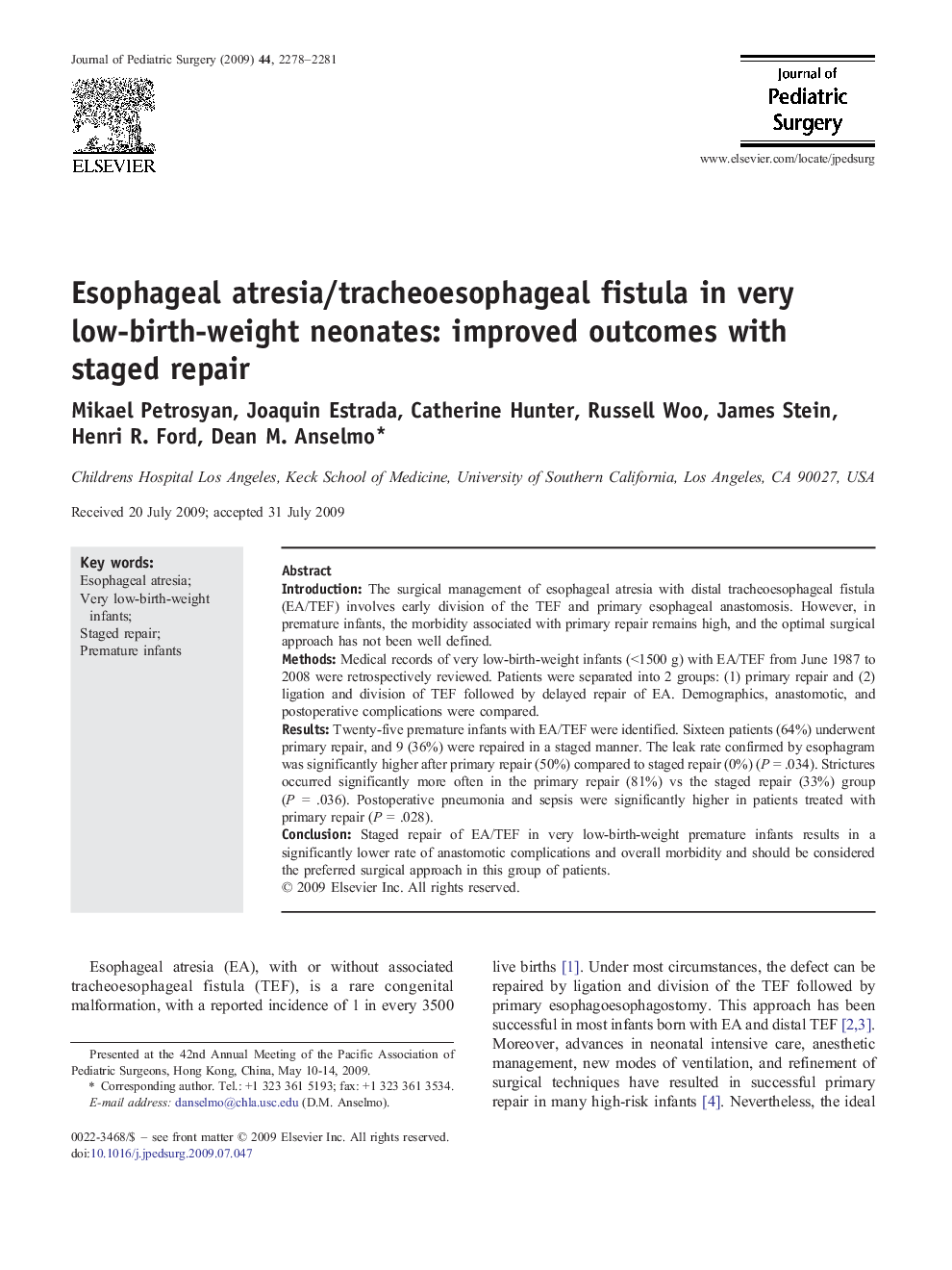| Article ID | Journal | Published Year | Pages | File Type |
|---|---|---|---|---|
| 4157815 | Journal of Pediatric Surgery | 2009 | 4 Pages |
IntroductionThe surgical management of esophageal atresia with distal tracheoesophageal fistula (EA/TEF) involves early division of the TEF and primary esophageal anastomosis. However, in premature infants, the morbidity associated with primary repair remains high, and the optimal surgical approach has not been well defined.MethodsMedical records of very low-birth-weight infants (<1500 g) with EA/TEF from June 1987 to 2008 were retrospectively reviewed. Patients were separated into 2 groups: (1) primary repair and (2) ligation and division of TEF followed by delayed repair of EA. Demographics, anastomotic, and postoperative complications were compared.ResultsTwenty-five premature infants with EA/TEF were identified. Sixteen patients (64%) underwent primary repair, and 9 (36%) were repaired in a staged manner. The leak rate confirmed by esophagram was significantly higher after primary repair (50%) compared to staged repair (0%) (P = .034). Strictures occurred significantly more often in the primary repair (81%) vs the staged repair (33%) group (P = .036). Postoperative pneumonia and sepsis were significantly higher in patients treated with primary repair (P = .028).ConclusionStaged repair of EA/TEF in very low-birth-weight premature infants results in a significantly lower rate of anastomotic complications and overall morbidity and should be considered the preferred surgical approach in this group of patients.
